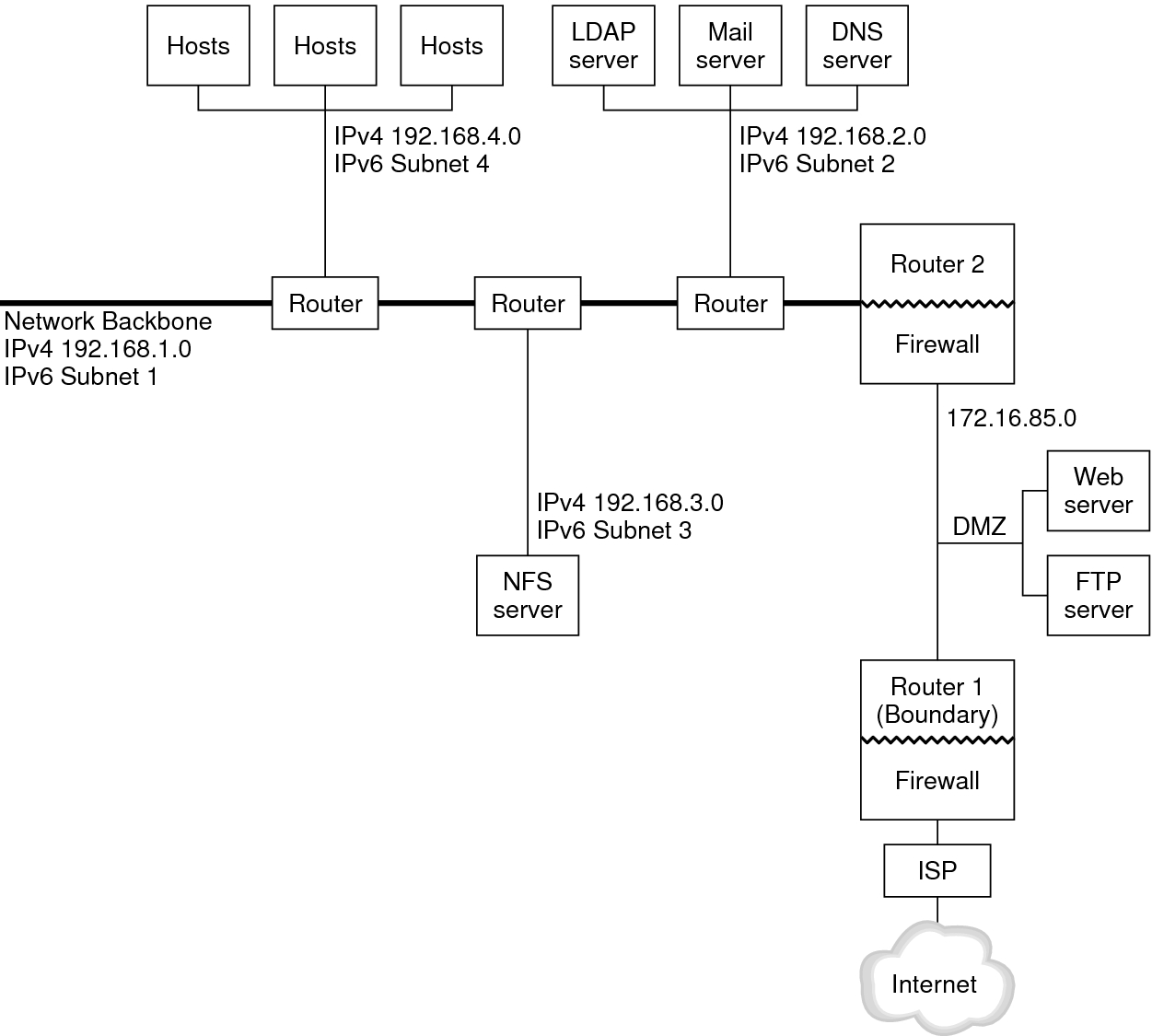IPv6 Network Topology Overview
Typically, IPv6 is used in a mixed network topology that also uses IPv4, such as shown in the following figure. The following figure is used as reference in the description of IPv6 configuration tasks that are described in this chapter.
Figure 2-1 IPv6 Network Topology Scenario

The enterprise network scenario depicted in the figure consists of five subnets with existing IPv4 addresses. The links of the network correspond directly to the administrative subnets. The four internal networks are shown with RFC 1918-style private IPv4 addresses, which is a common solution for the lack of IPv4 addresses.
Subnet 1 is the internal network backbone 192.168.1.
Subnet 2 is the internal network 192.168.2, with LDAP, sendmail, and DNS servers.
Subnet 3 is the internal network 192.168.3, with the enterprise's NFS servers.
Subnet 4 is the internal network 192.168.4, which contains hosts for the enterprise's employees.
These internal networks use the following address scheme:
The external, public network 172.16.85 functions as the corporation's DMZ. This network contains web servers, anonymous FTP servers, and other resources that the enterprise offers to the outside world. Router 2 runs a firewall and separates public network 172.16.85 from the internal backbone. On the other end of the Demilitarized Zone (DMZ), Router 1 runs a firewall and serves as the enterprise's boundary server.
In Figure 2–1, the public DMZ has the RFC 1918 private address 172.16.85. In the real world, the public DMZ must have a registered IPv4 address. Most IPv4 sites use a combination of public addresses and RFC 1918 private addresses. However, when you introduce IPv6, the concept of public addresses and private addresses changes. Because IPv6 has a much larger address space, you use public IPv6 addresses on both private networks and public networks.
The Oracle Solaris dual protocol stack supports concurrent IPv4 and IPv6 operations. You can successfully run IPv4–related operations during and after deploying IPv6 on your network. When you deploy IPv6 on an operating network that is already using IPv4, ensure that you do not disrupt ongoing operations.